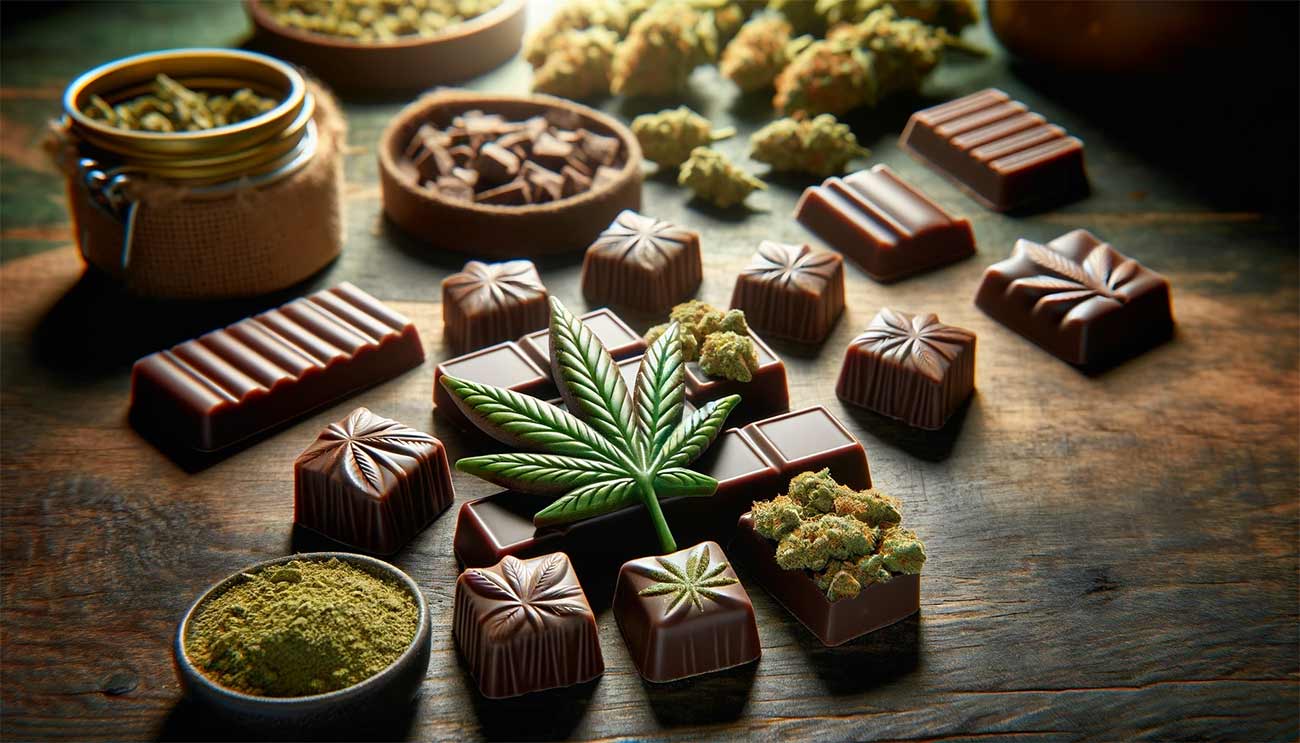When we stroll down the green-tinted lanes of cannabis confectionaries, two sweet champions often catch our eye: the playful THC gummies and the luxurious chocolate edibles. As we unwrap this tasty topic, let’s sink our teeth into the heart of the matter: are THC gummies stronger than their chocolate counterparts?
Analyzing THC Potency: Gummies versus Chocolate Edibles
Unlike inhalation methods, edibles introduce cannabinoids to the body through the digestive system. This process results in a different onset, duration, and intensity of effects. The potency of an edible is not solely determined by the THC content but also by the form it takes and the other ingredients present.
| Gummies | Chocolate Edibles |
| THC gummies are known for their fast-acting effects, attributed to their composition and ease of dosing. Gummies tend to be more straightforward in their THC content, often providing a clear indication of the THC mg per piece. This clarity can be beneficial for users looking to manage their intake and experience predictable effects. | Chocolate edibles, on the other hand, have a reputation for delivering more extended and potentially more soothing effects due to the fat content in chocolate. The fats present in chocolate can protect and prolong the THC, aiding in a more consistent effect over a longer period. This characteristic makes chocolate edibles preferable for individuals seeking prolonged relief or relaxation. |
01. Pharmacokinetic Profiles
Gummies infused with THC are characterized by their organoleptic variety and consistency in dosage. Each gummy is engineered to deliver a precise quantity of THC, appealing to both the gustatory senses and the requirements for dosing accuracy. Conversely, chocolate edibles present a complex amalgam of cocoa solids, fats, and THC. The inherent palatability of chocolate may seemingly obscure the sensory detection of THC, prompting queries regarding the impact of such sensory factors on perceived potency.
Bioavailability is the crux of this analysis, denoting the proportion of THC that enters the systemic circulation post-ingestion and its rate of absorption. Both gummies and chocolates are ingested orally, thus initiating the metabolic process within the gastrointestinal tract. However, the physicochemical properties of these matrices lead to distinct absorption kinetics.
02. Absorption Mechanics
Edible gummies, typically composed of gelatin or plant-based pectin, may present a streamlined gastrointestinal transit. Their relatively simple composition could facilitate a more expeditious absorption of THC. In contrast, the lipid content in chocolate edibles is postulated to retard gastric emptying, which, in theory, could modulate the release and subsequent absorption of THC, potentially extending its bioavailability.
Anecdotal evidence suggests that consumers perceive a swifter onset of psychotropic effects from gummies as opposed to chocolate edibles. This could be attributed to the aforementioned differences in composition and digestive processing. However, this accelerated onset may be accompanied by a shorter duration of action. Conversely, the lipid matrix of chocolate could result in a more sustained release of THC, thereby prolonging the therapeutic or psychoactive effects.
| Aspect | THC Gummies | Chocolate Edibles |
|---|---|---|
| Onset of Effects | Tend to be faster due to lower fat content. | Slower due to higher fat content, allowing THC to bind and be released gradually. |
| Duration of Effects | Generally shorter-lived, as the body processes them more quickly. | Longer-lasting effects due to the slow release of THC into the system. |
| Flavor Variety | Wide range of flavors, catering to different preferences. | Rich, indulgent flavors with options for dark or milk chocolate. |
| Discreetness | Highly discreet and easy to dose accurately. | Less discreet but still portable. |
| Bioavailability | May have lower bioavailability compared to chocolates. | Higher fat content could lead to increased bioavailability. |
03. Dosage and Concentration
Gummies usually come in precise doses, making it easier to predict their strength. Chocolate edibles, while they can be portioned, sometimes suffer from the mystery of the mix—where one square might pack more punch than another. A 10mg THC gummy may hold the same quantity of THC as 10mg infused in a chocolate bar, but your body might interpret them differently.
Conclusion
The comparative potency of tetrahydrocannabinol (THC)-infused gummies versus chocolate edibles cannot be distilled into a binary categorization of stronger or weaker. The efficacy and intensity of the psychoactive effects are influenced not solely by the quantitative content of milligrams but also by the synergistic interaction of the constituents within the product and the physiological response of the consumer.

